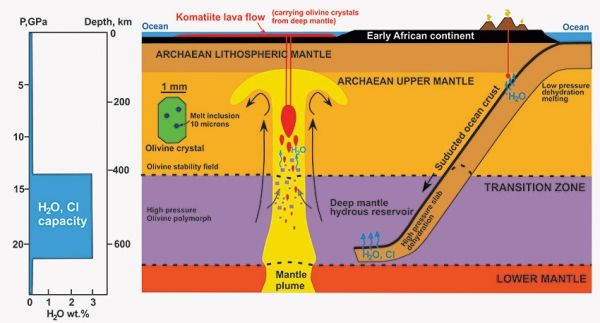The remains of a microscopic drop of ancient seawater has assisted in rewriting the history of Earth’s evolution when it was used to re-establish the time that plate tectonics started on the planet.
Plate tectonics is Earth’s vital – and unique – continuous recycling process that directly or indirectly controls almost every function of the planet, including atmospheric conditions, mountain building (forming of continents), natural hazards such as volcanoes and earthquakes, formation of mineral deposits and the maintenance of our oceans. It is the process where the large continental plates of the planet continuously move, and the top layers of the Earth (crust) are recycled into the mantle and replaced by new layers through processes such as volcanic activity.
Where it was previously thought that plate tectonics started about 2.7 billion years ago, a team of international scientists used the microscopic leftovers of a drop of water that was transported into the Earth’s deep mantle – through plate tectonics – to show that this process started 600 million years before that. An article on their research that proves plate tectonics started on Earth 3.3 billion years ago was published in the high impact academic journal, Nature, on 16 July.
Read more at University of the Witwatersrand
Image Credit: University of the Witwatersrand


